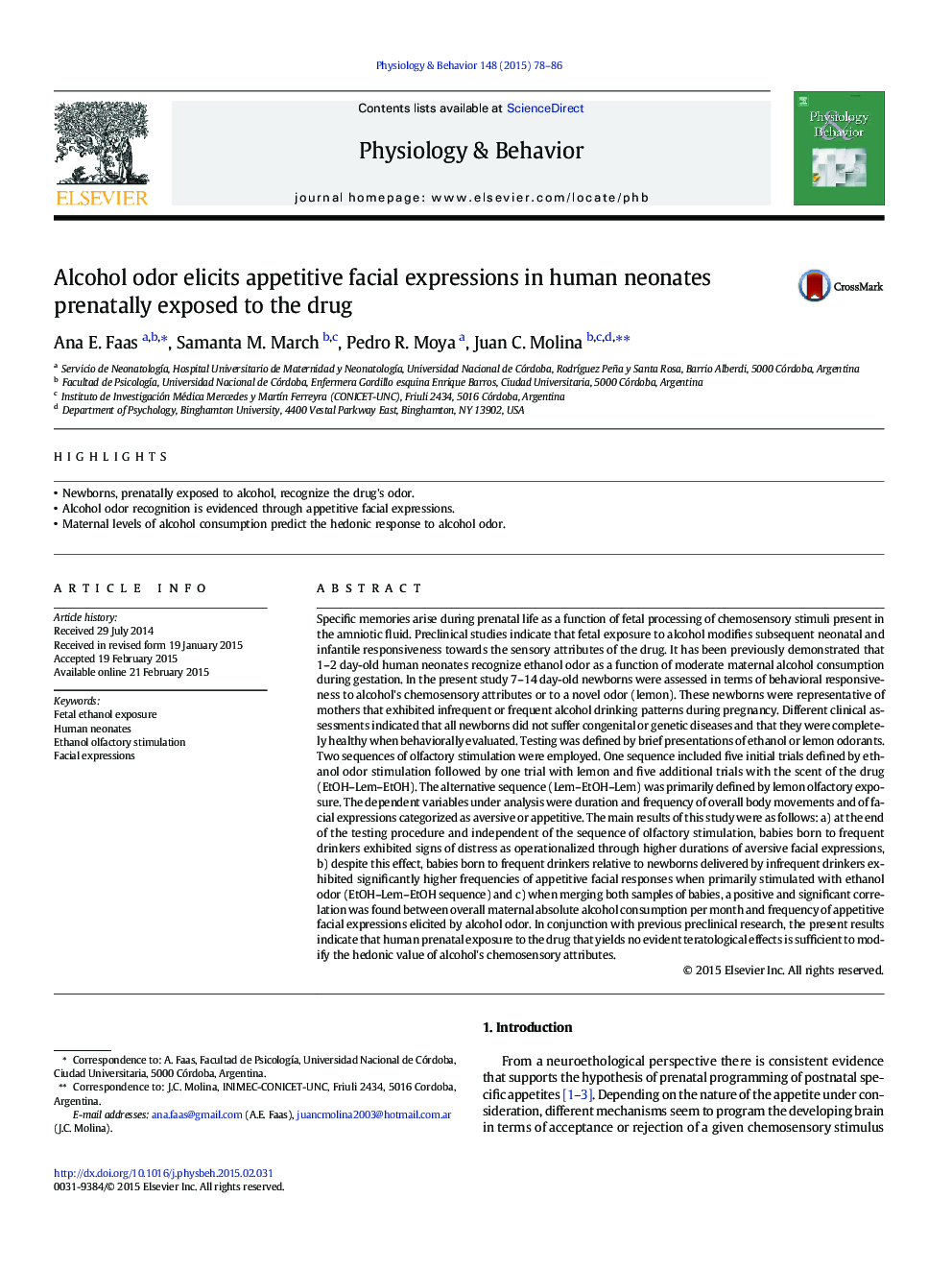| کد مقاله | کد نشریه | سال انتشار | مقاله انگلیسی | نسخه تمام متن |
|---|---|---|---|---|
| 2844097 | 1571169 | 2015 | 9 صفحه PDF | دانلود رایگان |
• Newborns, prenatally exposed to alcohol, recognize the drug's odor.
• Alcohol odor recognition is evidenced through appetitive facial expressions.
• Maternal levels of alcohol consumption predict the hedonic response to alcohol odor.
Specific memories arise during prenatal life as a function of fetal processing of chemosensory stimuli present in the amniotic fluid. Preclinical studies indicate that fetal exposure to alcohol modifies subsequent neonatal and infantile responsiveness towards the sensory attributes of the drug. It has been previously demonstrated that 1–2 day-old human neonates recognize ethanol odor as a function of moderate maternal alcohol consumption during gestation. In the present study 7–14 day-old newborns were assessed in terms of behavioral responsiveness to alcohol's chemosensory attributes or to a novel odor (lemon). These newborns were representative of mothers that exhibited infrequent or frequent alcohol drinking patterns during pregnancy. Different clinical assessments indicated that all newborns did not suffer congenital or genetic diseases and that they were completely healthy when behaviorally evaluated. Testing was defined by brief presentations of ethanol or lemon odorants. Two sequences of olfactory stimulation were employed. One sequence included five initial trials defined by ethanol odor stimulation followed by one trial with lemon and five additional trials with the scent of the drug (EtOH–Lem–EtOH). The alternative sequence (Lem–EtOH–Lem) was primarily defined by lemon olfactory exposure. The dependent variables under analysis were duration and frequency of overall body movements and of facial expressions categorized as aversive or appetitive. The main results of this study were as follows: a) at the end of the testing procedure and independent of the sequence of olfactory stimulation, babies born to frequent drinkers exhibited signs of distress as operationalized through higher durations of aversive facial expressions, b) despite this effect, babies born to frequent drinkers relative to newborns delivered by infrequent drinkers exhibited significantly higher frequencies of appetitive facial responses when primarily stimulated with ethanol odor (EtOH–Lem–EtOH sequence) and c) when merging both samples of babies, a positive and significant correlation was found between overall maternal absolute alcohol consumption per month and frequency of appetitive facial expressions elicited by alcohol odor. In conjunction with previous preclinical research, the present results indicate that human prenatal exposure to the drug that yields no evident teratological effects is sufficient to modify the hedonic value of alcohol's chemosensory attributes.
Journal: Physiology & Behavior - Volume 148, 1 September 2015, Pages 78–86
